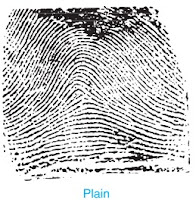Classification of Crystalline Solids
What are Crystalline Solids ?
We know that solids that have their constituent particles arranged in a definite pattern are called crystalline solids. So, depending upon the nature of these constituent particles, crystalline solids are further classified into four types:
1. Ionic solids
2. Molecular solids
3. Covalent or network solids
4. Metallic solids
We will discuss all the above crystalline solids one by one.
Classification of Crystalline Solids
Following are the classification of crystalline solids:
1. Ionic Solids
As the name suggests, crystalline solids that are made up of ions i.e cations and anions are called ionic solids. For example; NaCl is an ionic solid which contains Na⁺ and Cl⁻. These ions are held together by strong electrostatic attraction forces.
Properties of ionic solids
Following are some properties of ionic solids:
1. They have high boiling and melting points due to the presence of strong electrostatic forces of attraction.
2. They are bad conductors of electricity due to the absence of free-moving ions. Though, in an aqueous solution or molten state, they become good conductors of electricity as their ions become free.
3. They have excellent solubility in polar solvents but are insoluble in non-polar solvents.
4. They are hard solid due to their closely packed structure and the presence of strong electrostatic forces of attraction.
2. Molecular Solids
Solids that are made up of molecules are called molecular solids. Based upon the nature of molecules, they are further divided into three types:
(a) Non-polar molecular solids
Molecular solids that are made up of either atom of noble gases like helium, neon, argon, etc or non-polar molecules like hydrogen, iodine, chlorine, etc are called non-polar molecular solids. Constituent particles in these types of solids are held by London forces.
Following are some properties of non-polar molecular solids:
1. They are soft due to the presence of weak intermolecular forces of attraction.
2. They are bad conductors of electricity due to the absence of free ions.
3. They have low boiling and melting point due to the presence of weak intermolecular forces of attraction.
4. They generally exist in the gaseous or liquid state at room temperature due to the presence of weak intermolecular forces of attraction.
(b) Polar molecular solids
Molecular solids are made up of polar molecules like HCl, SO₂, etc. Constituent particles in these types of solids are held by dipole-dipole forces of attraction. Dipole forces are stronger as compared to London forces that we have discussed in non-polar molecular solids.
Following are some properties of polar molecular solids:
1. They are soft and bad conductors of electricity.
2. They have a little bit higher melting and boiling point as compared to non-polar molecular solids.
3. They also exist in the gaseous or liquid state at room temperature.
(c) Hydrogen-bonded molecular solids
Molecular solids whose constituents particles are held together by hydrogen bonding are called hydrogen-bonded molecular solids. For example, Electronegative atoms like F, O, and N are held with hydrogen atoms through strong hydrogen bonds which give rise to molecules like H₂O, NH₃, etc.
Following are some properties of hydrogen-bonded molecular solids:
1. They are volatile liquids or soft solids at room temperature.
2. They are also bad conductors of electricity.
3. They have the highest melting and boiling point as compared to polar and non-polar molecular solids due to the presence of strong hydrogen bonds.
3. Covalent or Network Solids
Crystalline solids in which constituent particles are held by covalent bonds are called covalent solids. Further, the repetition of such covalent bonds in crystal gives rise to a network. That's why they are also known as network solids.
A famous example of covalent solids is diamond in which carbon-carbon atoms are liked with each other by covalent bonds.
Properties of covalent solids
Following are some properties of covalent solids:
1. They are hard and brittle due to the presence of strong covalent bonds.
2. They have the highest melting point among all crystalline solids.
3. They act as insulators to heat and electricity.
Exception: Graphite is also a covalent solid but it is soft and conducts electricity.
4. Metallic Solids
Metallic solids contain positively charged metal ions and free electrons. They have low ionization energy and can easily lose their valence electrons leaving behind positively charged ions.
Properties of metallic solids
Following are some properties of metallic solids:
1. They have excellent electrical and thermal conductivity.
2. They are malleable, ductile, and lustrous.
3. They have a high melting point as their constituent particles are closely packed.






